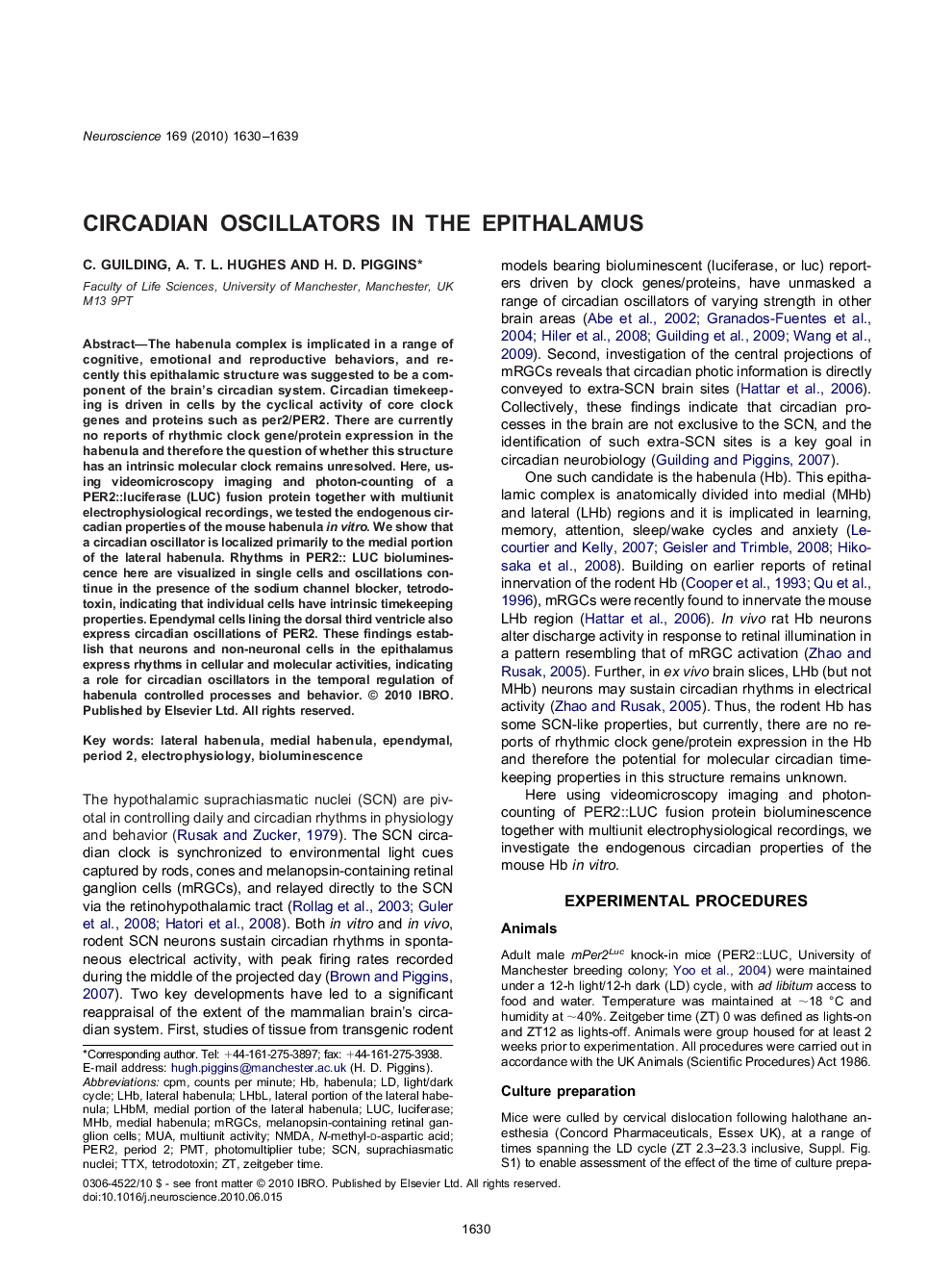| Article ID | Journal | Published Year | Pages | File Type |
|---|---|---|---|---|
| 6277106 | Neuroscience | 2010 | 10 Pages |
Abstract
The habenula complex is implicated in a range of cognitive, emotional and reproductive behaviors, and recently this epithalamic structure was suggested to be a component of the brain's circadian system. Circadian timekeeping is driven in cells by the cyclical activity of core clock genes and proteins such as per2/PER2. There are currently no reports of rhythmic clock gene/protein expression in the habenula and therefore the question of whether this structure has an intrinsic molecular clock remains unresolved. Here, using videomicroscopy imaging and photon-counting of a PER2::luciferase (LUC) fusion protein together with multiunit electrophysiological recordings, we tested the endogenous circadian properties of the mouse habenula in vitro. We show that a circadian oscillator is localized primarily to the medial portion of the lateral habenula. Rhythms in PER2:: LUC bioluminescence here are visualized in single cells and oscillations continue in the presence of the sodium channel blocker, tetrodotoxin, indicating that individual cells have intrinsic timekeeping properties. Ependymal cells lining the dorsal third ventricle also express circadian oscillations of PER2. These findings establish that neurons and non-neuronal cells in the epithalamus express rhythms in cellular and molecular activities, indicating a role for circadian oscillators in the temporal regulation of habenula controlled processes and behavior.
Keywords
Related Topics
Life Sciences
Neuroscience
Neuroscience (General)
Authors
C. Guilding, A.T.L. Hughes, H.D. Piggins,
